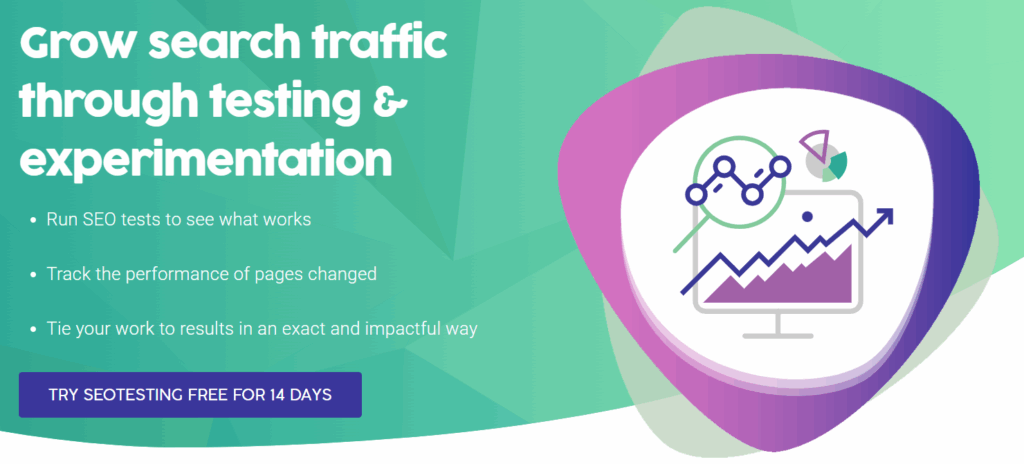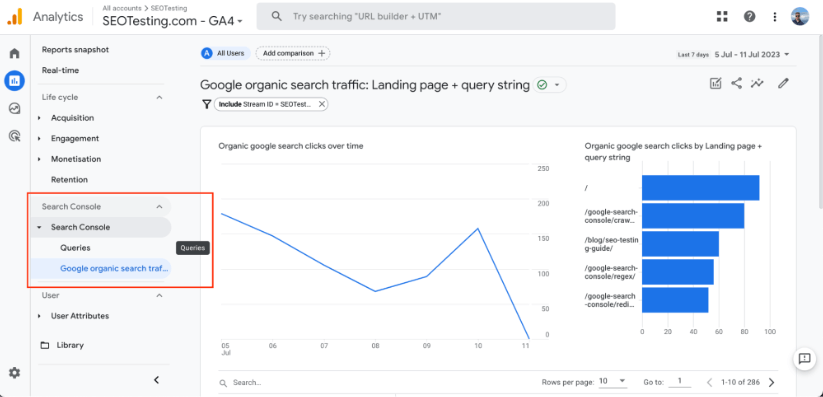Linking your Google Search Console account to your Google Analytics 4 (GA4) account is going to give you access to more useful information within your GA4 dashboard. This is information that is going to help you make more data-informed decisions which will lead your business to success in the SERPs.
In this article, we will show you how to link your Google Search Console to your GA4 account so you can access this data.
What is the advantage of linking Google Search Console to GA4?
Simply put, integrating Google Search Console with GA4 is going to give you access to Search Console metrics such as:
- Queries
- Impressions
- Clicks
- CTR
- Average Position
Not only will this limit the need for you to switch between two separate tools, it will also give you access to information that you cannot usually get within your GA4 account, most meaningful being the queries your website is ranking for.
Linking these two Google tools will also give you access to new reports, not accessible within GA4:
- Queries Report
- Organic Search Traffic Report
What data will be available once I link Google Search Console to GA4?
Linking your Google Search Console account to your GA4 account will give you access to the following dimensions not usually found in GA4:
- Search queries
- Landing pages
- Devices
- Countries
You will also find the following metrics:
- Organic Google search clicks
- Organic Google search impressions
- Organic search CTR
- Organic search average position
- Users
- Engaged sessions
- Engagement rate
- Average engagement time
- Event count
- Conversions
- Ad revenue
How do I connect my Google Search Console account to my GA4 account?
There are two ways to connect your Google Search Console and GA4 accounts. You can do this within Google Search Console or within GA4. In this article, we’ll focus on how to do this within GA4.
In GA4, head to Admin > Search Console Links.
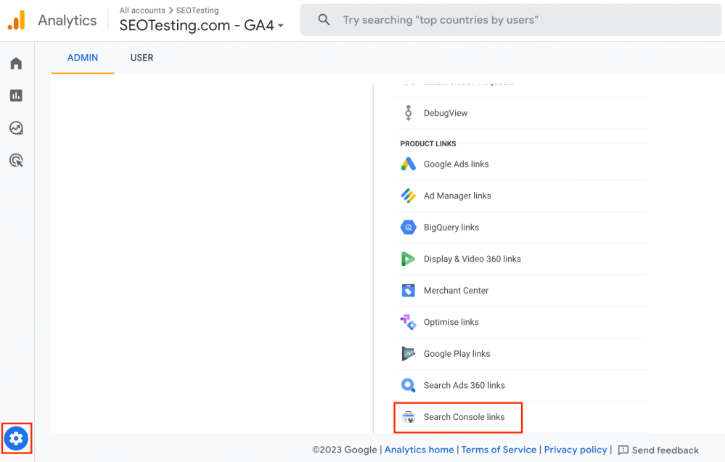
You will see a screen that looks like this:

Click the blue “Link” button on the top right-hand corner of this section.
This will bring you to a new screen pop-up which will contain all the link set-up that you need.
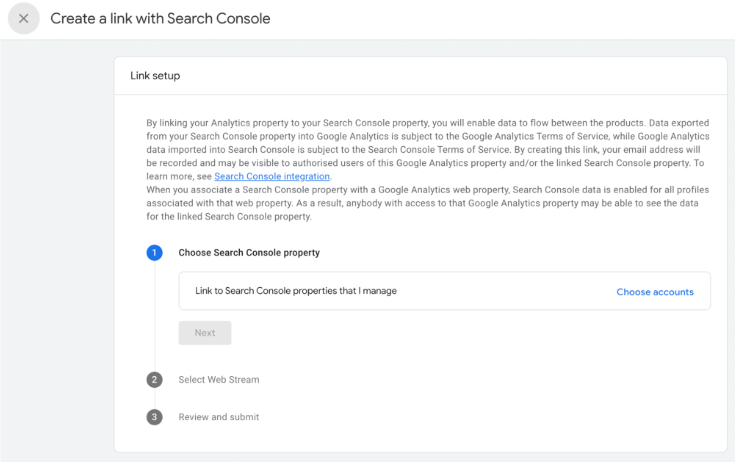
Click the blue “Choose accounts” link.
Note: You must be a verified site owner to complete the next steps. For the purpose of this article, we will assume you are.
Once you have clicked the “Choose accounts” link, you will be presented with a list of Google Search Console properties in which you are a verified site owner.

Image Credit: Analytics Mania
You can only link one GSC property with one GA4 webstream.
Once you have selected the Google Search Console property you want to connect, tick the box and click “Confirm” as shown in the image above.
You will then move to the process of choosing a web stream. Click select and then select your web stream:
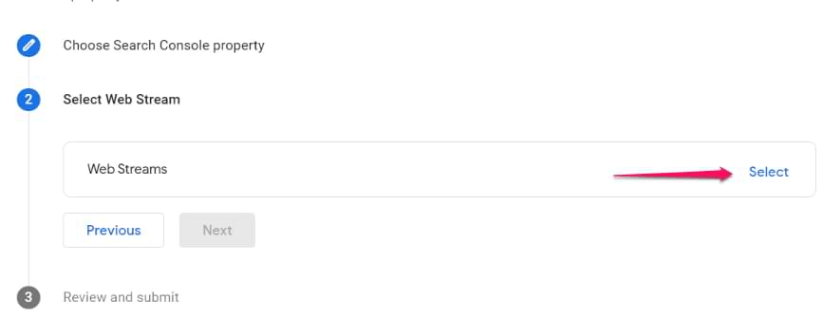
Image Credit: Analytics Mania
The final step is to review everything and click “Submit”.
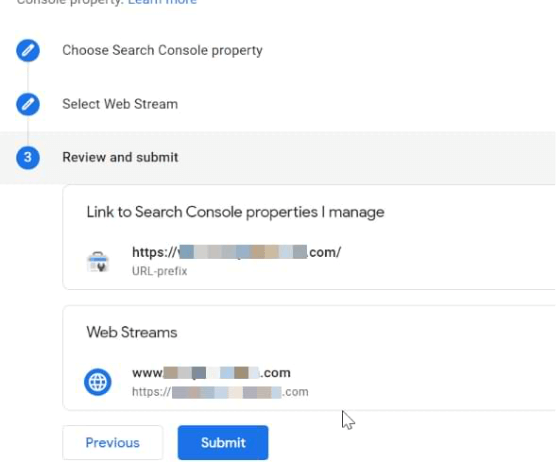
Image Credit: Analytics Mania
Once all these steps have been completed, you will see a green badge which confirms the link has been created.

You will need to wait up to 24 hours to start seeing data in your reports.
Where can I find my Google Search Console Data within GA4?
To find your Google Search Console data within your GA4 account, you need to head to your Acquisition Overview report.
You can do this by logging into your main dashboard, then clicking Reports > Acquisition > Overview.
The screenshot below shows where to access this:
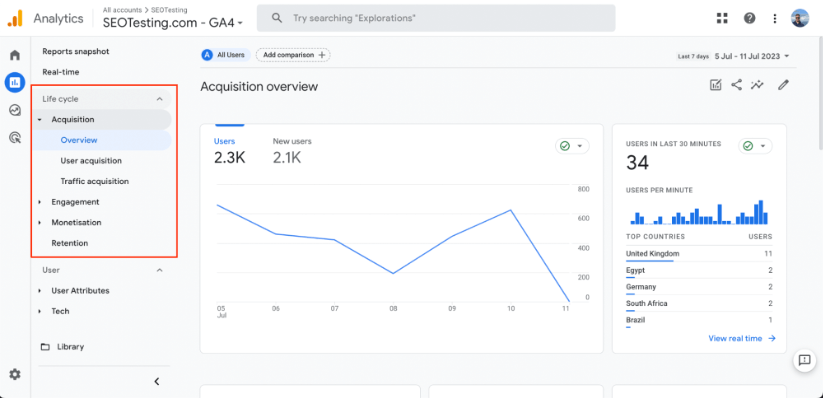
Once here, scroll down to the bottom of this report and you will be able to access your Google Organic search traffic and Google Organic search queries tabs:

You can customise these sections to show different metrics.
For example, within the Google Organic search traffic report, we can ask it to show:
- Impressions
- Clicks
- Engagement rate
- Engaged sessions
- CTR
- Average position
We can also ask it to show the metrics above organised by:
- Landing page + query string
- Device category
- Country
Simply click the dropdowns to select the metrics you want to show, as shown here:
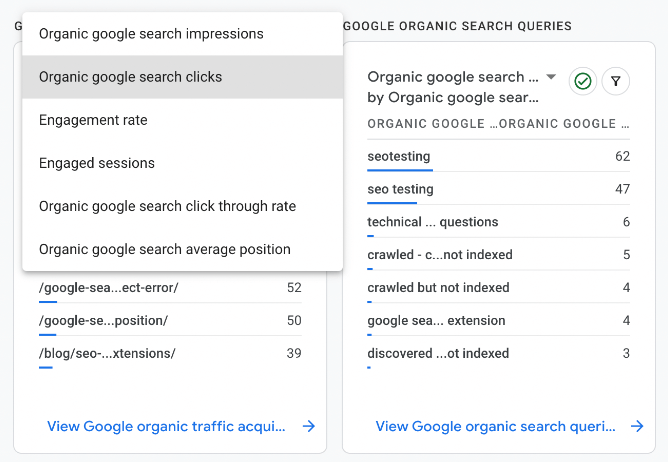
You can see more detailed views of these reports by clicking the blue links at the bottom of each section.
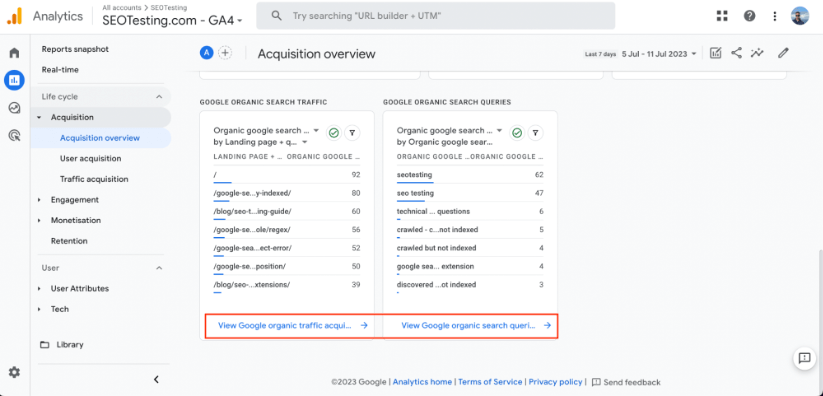
Clicking into the Google Organic search traffic report will show something similar to this:
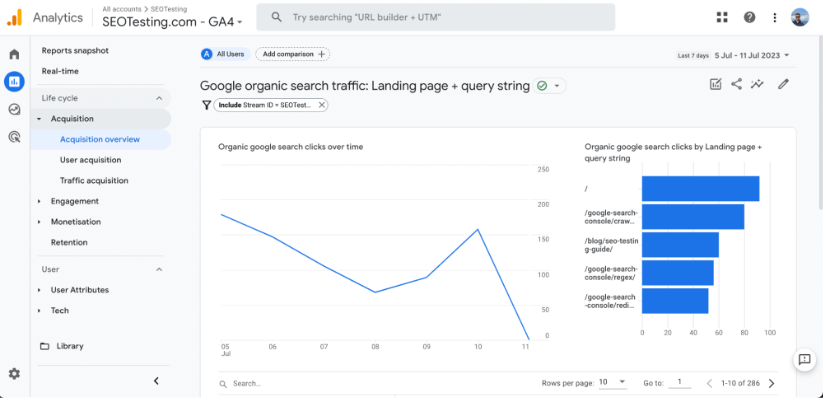
Can I add Search Console reports to the GA4 sidebar?
Yes, you can.
Within your reports section, select “Library” at the bottom of the toolbar.
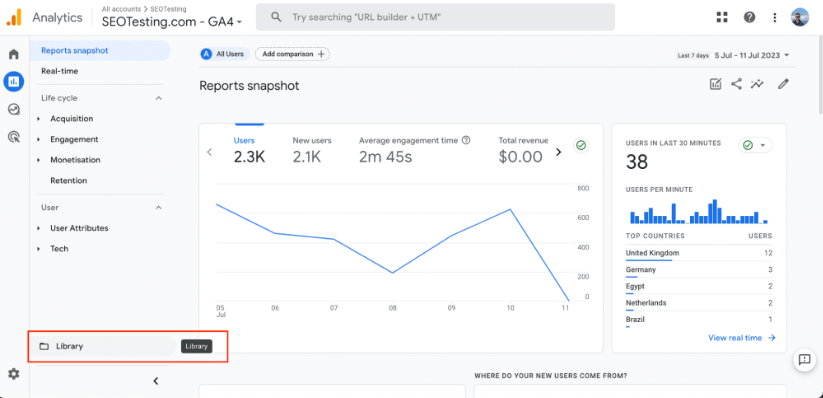
Within the “Collections” section of reports, you will see Search Console currently listed as unpublished.

Click on the three dots (settings) icon to the top right of the Search Console report and select “Publish” to publish this report live to your GA4 dashboard.
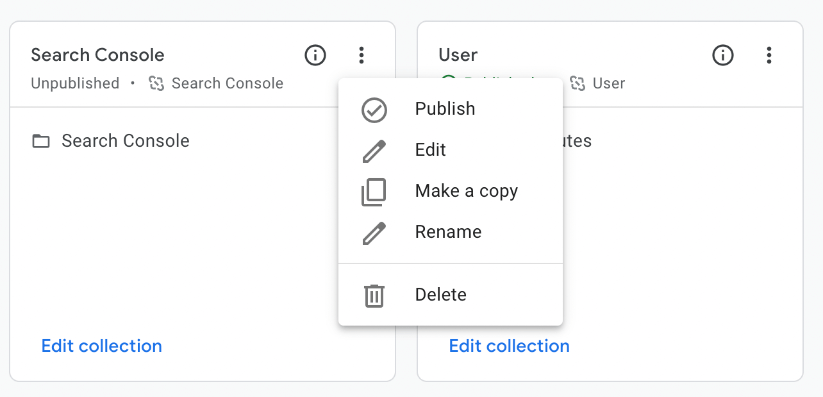
Your Google Search Console reports will now show on your sidebar, so they are easily accessible for future reference.
Frequently Asked Questions
Why should I link Google Search Console to GA4?
It gives you more data inside GA4. You can see search queries, impressions, clicks and more. This helps you make smarter SEO decisions.
What new reports do I get when I link the two?
You will unlock two reports:
- Queries Report
- Organic Search Traffic Report
What data becomes available after linking?
You’ll see search queries, landing pages, countries and devices. You’ll also get metrics like clicks, impressions, CTR and average position.
Where do I connect Google Search Console in GA4?
Go to Admin > Search Console Links. Click the blue “Link” button to begin setup.
What permissions do I need?
You must be a verified site owner in Search Console. You also need edit access in GA4.
How long before I see data in GA4 after linking?
It can take up to 24 hours for data to appear.
Where can I find the Search Console data in GA4?
Go to Reports > Acquisition > Overview. Scroll down to see Google Organic search data.
Can I customize the Search Console reports in GA4?
Yes. You can change what metrics appear. You can also view by device, country or landing page.
Can I add Search Console reports to the GA4 sidebar?
Yes. Go to the “Library” under Reports. Click the three dots next to Search Console and select “Publish.”
Can I link more than one Search Console property to GA4?
No. Each GA4 web stream can only link to one Search Console property.
Hopefully this article has made the process of linking together your Google Search Console and GA4 accounts easy.
If you want to make more of your Google Search Console data, give SEOTesting a try. We currently have a 14-day free trial with no credit card.
